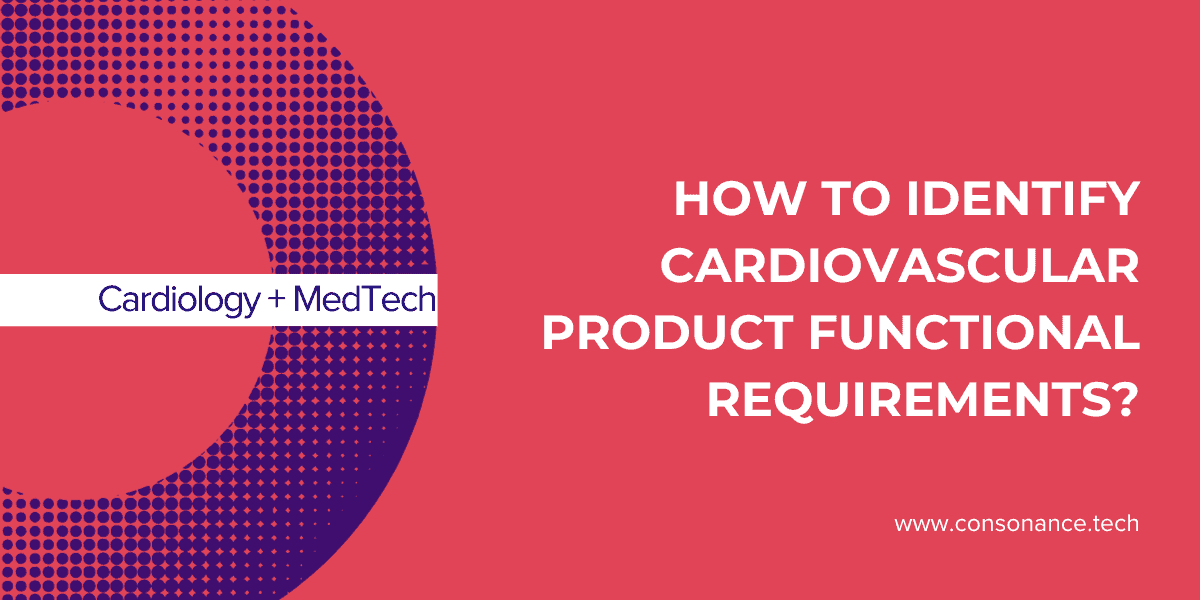How to Identify Cardiovascular Product Functional Requirements?

In the ever-evolving landscape of Cardiovascular medical technology (MedTech), innovation is the lifeblood of progress. From cutting-edge devices to revolutionary healthcare solutions, the role of functional requirements analysis cannot be overstated. Get familiar with a pivotal role of functional requirements analysis in Cardiovascular MedTech, shedding light on how it drives the development of groundbreaking medical technologies that transform patients care.
Table of Contents
Cardiovascular medical device intended use
Identifying functional requirements for cardiovascular products is a critical aspect of their development, ensuring that they meet the necessary standards and specifications. Firstly, a thorough understanding of the intended use and purpose of the cardiovascular product is essential. This involves collaboration between medical professionals, engineers, and regulatory experts to define the specific functionalities required for the device to perform effectively. For example, if developing a cardiovascular monitoring device, the functional requirements may include accurate measurement of vital signs, real-time data transmission, and user-friendly interfaces for healthcare providers.
The “intended use” of a medical device refers to the specific purpose for which the device is designed, manufactured, and labeled. This definition is a crucial aspect of medical device regulation, as it guides the device’s classification, safety standards and marketing claims. The intended use statement provides clarity on what a medical device is meant to achieve and the patient population it is intended for, helping healthcare professionals and regulatory bodies assess its performance and safety for a particular medical application.
Functional requirements analysis
The input element for the analysis and design of every product should begin with identification of product functional requirements, i.e. an answer to “What should it do?” question. The first step is creating a simple list of simple statements, parameters, functions the product shall perform.
A widely used standard approach indicates to create the list with the following rules:
- Each requirement should be clear and unambiguous, stating a single expression for every statement.
- Each requirement should be stated positively – describing “what it does”, not “what it does not”.
- The use of “To Be Determined” (TBD) values should be minimized. It is better to use a best estimate for a value and mark it “To Be Resolved” (TBR).
- Each requirement should be free of implementation specifics and/or operation description – statement of “what if does”, not “how”.
- Each requirement should be necessary, sufficient and realistic.
- Each of the requirement should be precise and verifiable (i.e. should not include terms such as: “easy”, “sufficient”, “safe”, “adequate”, “user-friendly”, “usable”, “when
- required”, “fast”, “sufficient”, “robust”, …”).
The second step requires prioritization of the prepared list. An evaluation of each requirement will greatly help with following design decisions and preparation of the final technical specification of the product. The widely-adopted approach covers division od the functional features into three groups:
- Must have – critical features necessary to meet the main functional assumptions of the product. Failure to implement any of them will make it impossible to use.
- Should have – essential but not critical features. Failure to implement any of them reduces the value of the product but does not prevent its use.
- Nice to have – expected features that have a chance to increase the value of the product if introduced.
Get the full report for free
Would you like to see, how experts work on a medical device to define a product requirements properly?
Dive into a real-world Technical Feasibility Study example e-book based on a Generic Holter to experience the full value of this approach and find the prioritization of the functional requirements, measurement procedures and errors, an extensive analysis of the reference products, the regulatory classification of the designed device, identification and analysis of the applicable standards, the concept of technical solution from scratch and conclusions highlighting the most crucial aspects of the project.







